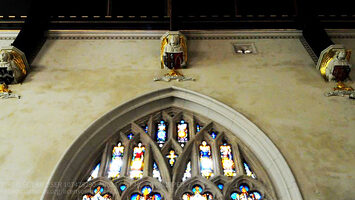Janus Week: Reflections on Raico’s “The Rise, Fall, and Renaissance of Classical Liberalism”
A short introduction to Ralph Raico’s 1992 essay.

During Janus week, Libertarianism.org is inviting readers to consider inflection points and periods of transition where old and new meet. While Ralph Raico’s intellectual history necessarily omits much detail given its length, it makes up for that in breadth, providing a survey of liberal thought from the middle ages to the 1980s. That wide view helps bring into focus two inflection points:
The first is the ever-moving present—by giving us a relatively full view of liberalism’s past in a relatively concise package, Raico’s essay enables modern liberal readers to look ahead to the future with a rich understanding of the context in which they arrived at their current vantage point. While important work has been done in the three decades since Raico’s essay was published, that work still represents the cutting edge of liberal thought; it belongs, historically speaking, to the present more than the past.
The second inflection point is the Classical Liberal renaissance that Raico argues was spearheaded by Ludwig von Mises’s 1922 book Socialism. I would put the beginning of that renaissance slightly later, but only because Mises was, especially that early in his career, ahead of his time.
In 1922 liberalism’s fortunes were still on the decline, with the Russian Revolution ending in 1923 and the fall of the Weimar Republic happening a decade after that. Mises himself was forced to flee Austria because of the Nazi threat, arriving first in Geneva and then, in 1940, New York City. In December 1940, Mises wrote, “I have come to realize that my theories explain the degeneration of a great civilization; they do not prevent it. I set out to be a reformer, but only became the historian of decline” (Mises 2013, p 80; see also p. xiii).
Moreover, several important figures in the revival of liberal ideas only really arrived on the scene in the early 1940s. I have in mind people like Hayek, Friedman, and modern libertarianism’s three “founding mothers”—Rose Wilder Lane, Isabel Paterson, and Ayn Rand. With that in mind, one might date the classical liberal renaissance to Mises’ arrival in New York. The period from c. 1920 to c. 1940, rather than the early period of liberalism’s rebirth, might better be called its “dark night of the soul.”
Read “The Rise Fall, and Renaissance of Classical Liberalism” here on Libertarianism.org.
Works Cited
Mises, Ludwig von. 2013. Notes and Recollections with The Historical Setting of the Austrian School of Economics. Indianapolis, IN: Liberty Fund.